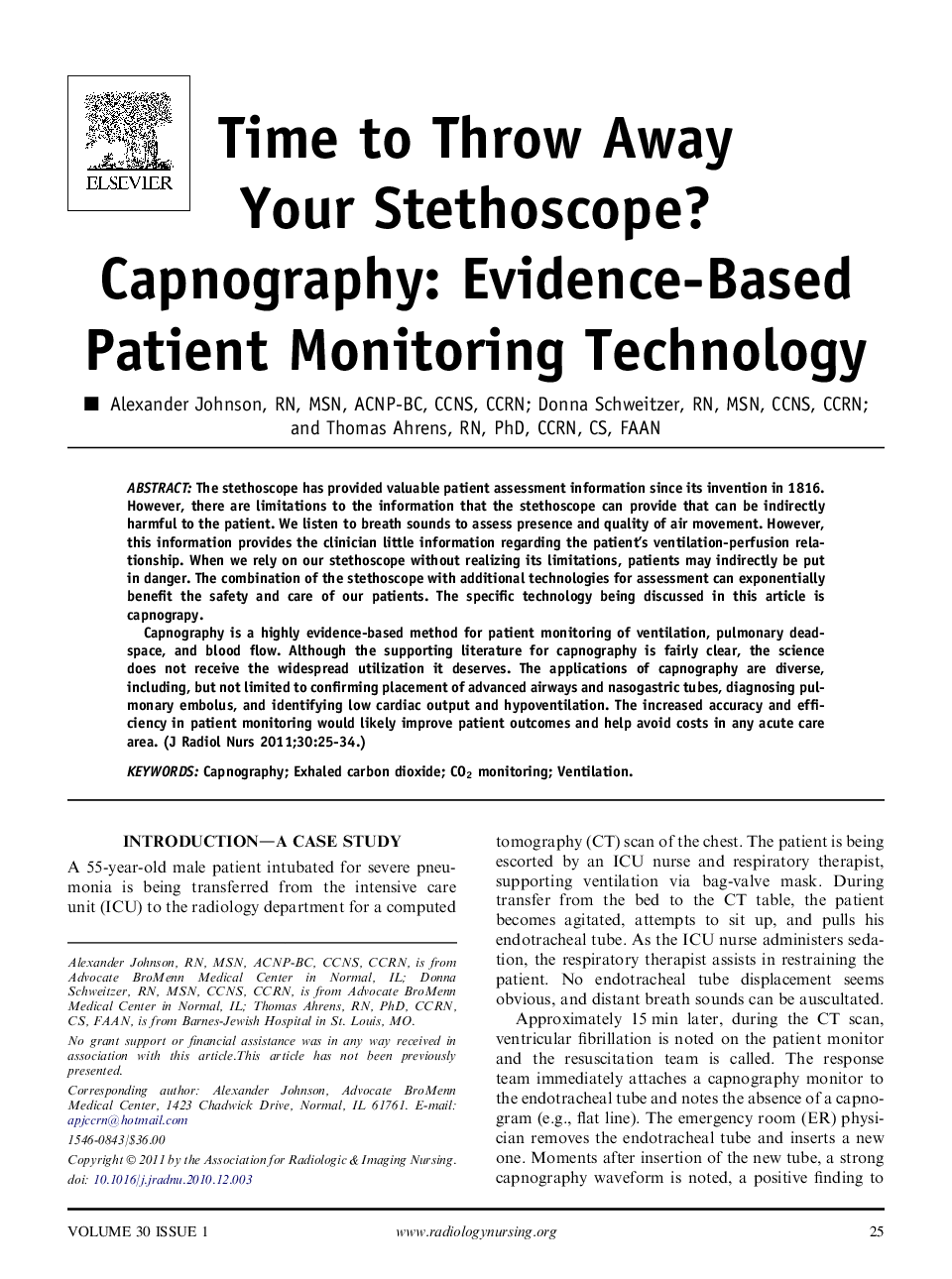| Article ID | Journal | Published Year | Pages | File Type |
|---|---|---|---|---|
| 2673447 | Journal of Radiology Nursing | 2011 | 10 Pages |
The stethoscope has provided valuable patient assessment information since its invention in 1816. However, there are limitations to the information that the stethoscope can provide that can be indirectly harmful to the patient. We listen to breath sounds to assess presence and quality of air movement. However, this information provides the clinician little information regarding the patient’s ventilation-perfusion relationship. When we rely on our stethoscope without realizing its limitations, patients may indirectly be put in danger. The combination of the stethoscope with additional technologies for assessment can exponentially benefit the safety and care of our patients. The specific technology being discussed in this article is capnograpy.Capnography is a highly evidence-based method for patient monitoring of ventilation, pulmonary deadspace, and blood flow. Although the supporting literature for capnography is fairly clear, the science does not receive the widespread utilization it deserves. The applications of capnography are diverse, including, but not limited to confirming placement of advanced airways and nasogastric tubes, diagnosing pulmonary embolus, and identifying low cardiac output and hypoventilation. The increased accuracy and efficiency in patient monitoring would likely improve patient outcomes and help avoid costs in any acute care area.
